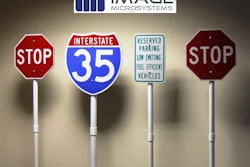New research from the Insurance Institute for Highway Safety (IIHS) has found that red light cameras save lives and reduce traffic crashes, reports the Governors Highway Safety Association.
According to IIHS, had red light cameras been in place during the period they studied in all 99 U.S. cities with populations more than 200,000, a total of 815 deaths could be saved. While other studies have demonstrated the safety benefits of red light cameras, this is the first to look at fatal intersection crashes across many cities with red light cameras.
GHSA says it has long supported red light cameras as a tool to reduce intersection crashes and injuries. Use of this tool will help states meet the aggressive national highway safety goal of toward zero deaths by reducing fatalities by a 1,000 a year each year during the next 20 years, according to GHSA.
“We view technology as absolutely critical if this goal is to be met or exceeded,” GHSA notes.
According to IIHS, in 2009, 676 people were killed and 113,000 were injured in intersection crashes. Nearly two-thirds of the deaths were people other than the lawbreaking driver. Victims included passengers in other vehicles, pedestrians and bicyclists. There simply are not enough resources to put a police officer at every intersection, and enforcement at intersections is often dangerous. Cameras deployed in areas with a history of intersection crashes are a proven safety tool.
“We have known for years that when the public sees a law being enforced, they will respect it and drive more safely,” GHSA says. “That has been true with drunk driving and seat belt laws, and it is also true with red light cameras. This new IIHS study leaves no doubt that red light cameras are an effective enforcement tool and a key to intersection safety.”









